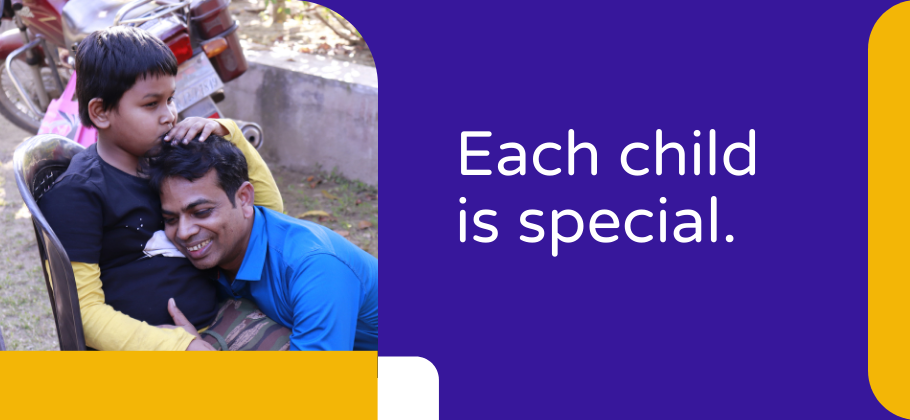
Autism is a lifelong neurological condition, a developmental disorder that typically occurs in the first three years of life. Autism appears as differences in development in three main areas: communication (verbal and non-verbal), social interactions and imagination, which can be seen in repetitive and restricted play or leisure activities. This is referred to as the triad of impairments.
While these areas are often late to develop, what is more significant is that they develop in unusual ways. Many individuals with autism have different ways of ‘sensing’ their world. For example, some may not like being touched gently but prefer a firm hold. Others may have difficulty in brushing their teeth or having a haircut. Many will have difficulty in tolerating some everyday sounds. Or some may have extreme likes and dislikes in their diet. Given these differences in communication, social interaction, imagination, in ‘sensing’ their world, many people with autism may have very unusual behaviours and atypical ways of relating to people, objects and events in the environment. As a result they are often mistakenly thought to be ‘disobedient’ or ‘badly behaved’.
Autism is known as a ‘spectrum disorder’ because the severity of symptoms can range from a mild learning and social disability, to more complex needs with multiple difficulties and often very unusual behaviour. Autism results in qualitative impairments. This means that in a person with autism, skills are present (not absent) but do not develop age appropriately. Therefore different skills develop at a different pace in different people with autism.
Another characteristic and perhaps the most confusing feature of autism is an uneven skill development. A neuro -typical child’s overall development at 4 years of age would be that of a 4 year old. A 4-year old child with autism however may have speech development like that of a 2-year, gross motor skills developed like an 8-year, fine motor skills of a 6-year, and self-help skills of a 3-year child. So a person may be able to do basic arithmetic but not speak; or may know the alphabet, numbers and nursery rhymes, but may not be able to ask for or tell his/her needs or desires. Because of all these characteristics, no two people on the autistic spectrum, look or behave the same.
They have a certain common set of social, communication and sensory issues that affect their behaviour in predictable ways. Their language skills may range from those who do not speak to those who display complex, grammatically correct speech. Some individuals may show only slight delays in language and greater difficulties in making friends. Some may have no sensory difficulties while for others every day contains too much sensory information.
However, each person has his or her own strengths and limitations and like all individuals, each person with autism has a unique personality and combination of characteristics. Thus, two children, both with the same diagnosis, can act very differently from one another and have varying skills; but they can learn using the same techniques.
Autism may occur alone, or may be accompanied by sensory processing difficulties, mental retardation, hyperactivity, motor difficulties, seizures and/or learning disability. But regardless of the other accompanying conditions, it is the autism that requires attention.
Autism is not a rare or uncommon disorder. It is the third most common developmental disorder, more common than Down’s syndrome. With an increase in understanding and awareness levels, professionals are beginning to understand that some people who were diagnosed with mental retardation, hyperactivity, or labelled badly behaved children may actually have autism.
Recent international studies show that about 1 in 68 people have autism and the overall incidence of autism is believed to be consistent around the globe (CDC, 2014). This means that there are over 18 million people with autism in India. This also means that we have all come across at least one person with autism in our lives – but we never realized s/he had autism.
We still do not know what causes autism. There is a lot of research looking into what may cause the condition, and the indications are that autism may result from a combination of factors including genetic and environmental influences.
Current research indicates that anything that can produce structural or functional damage to the central nervous system can produce the condition of autism.
We also know that certain viruses and known genetic conditions like Fragile X syndrome are associated with Autism. Statistics show that there are families that have more than one child with autism (a twin or a sibling) or wherein a parent or a grandparent may also have autism, and that reinforces the genetic component to the causes. Current estimates suggest that up to 25% of ASD is caused by known genetic abnormalities (Miles, 2011). We know that there is no one single gene for autism but several genes in combination are involved.
It is important to remember that autism is a spectrum disorder and the manifestation may vary widely across individuals. Hence it is believed that the factors that may have caused autism in a particular individual may entirely separate from those in a different individual. Given all these considerations, is difficult to tell parents why their child has autism and in most cases, the cause may not ever be known.
An important point to keep in mind is that autism is not caused by an unhappy home environment, both parents working, mental stress during the pregnancy, poor handling by the mother, an emotional trauma, or other psychological factors. A parent or home environment cannot cause a person to have autism.
CDC. Prevalence of Autism Spectrum Disorders Among Children Aged 8 Years — Autism and Developmental Disabilities Monitoring Network, 11 Sites, United States, 2010. MMWR 2014 ;63 (No SS 2):1-21. Miles, J. H. (2011). Autism spectrum disorders—a genetics review. Genetics in Medicine, 13(4), 278-294.
Autism may occur alone, or may be accompanied by other diagnoses. When autism co-occurs with another condition, it is important that all the interventions the individual receives are autism friendly.